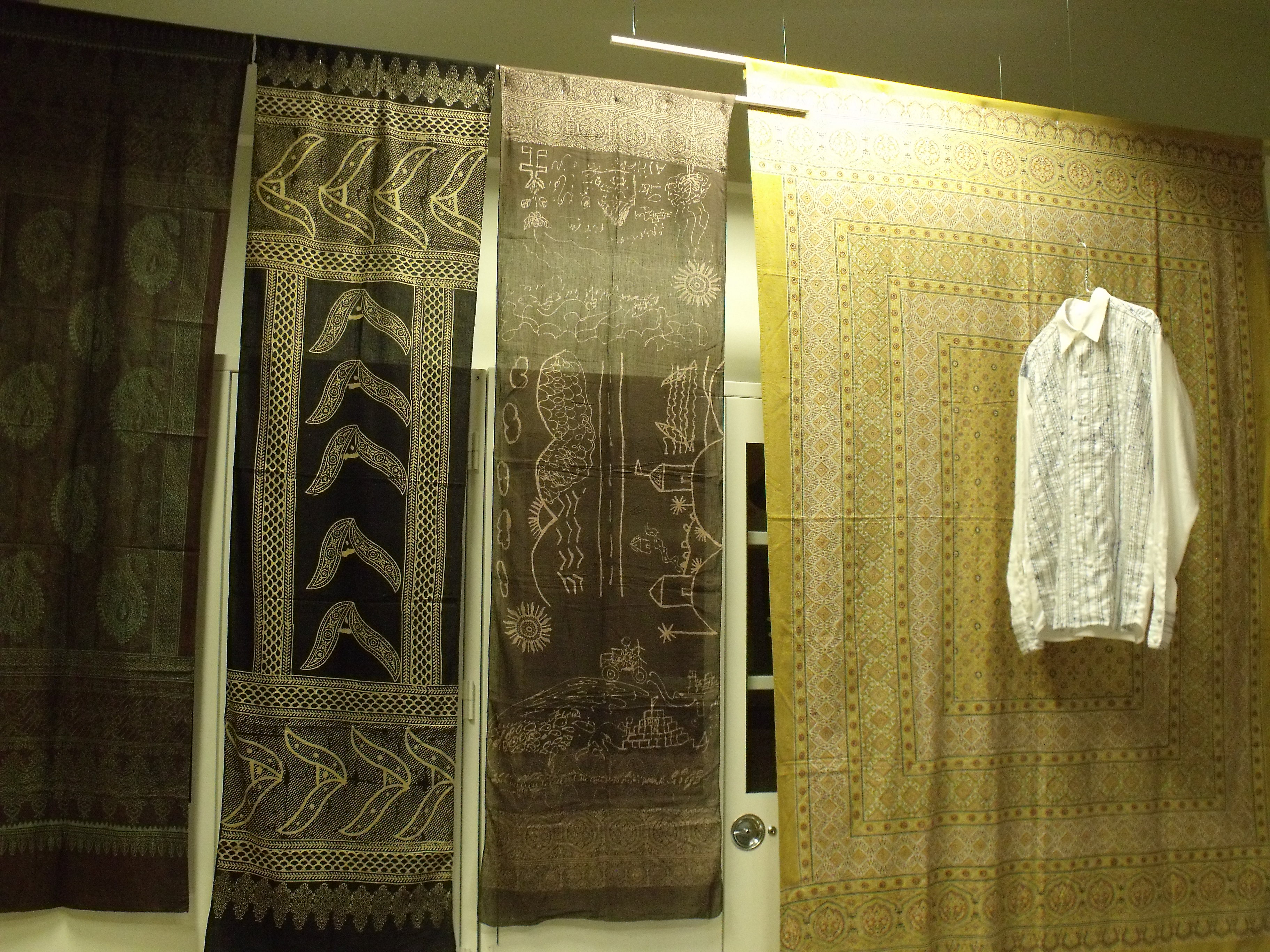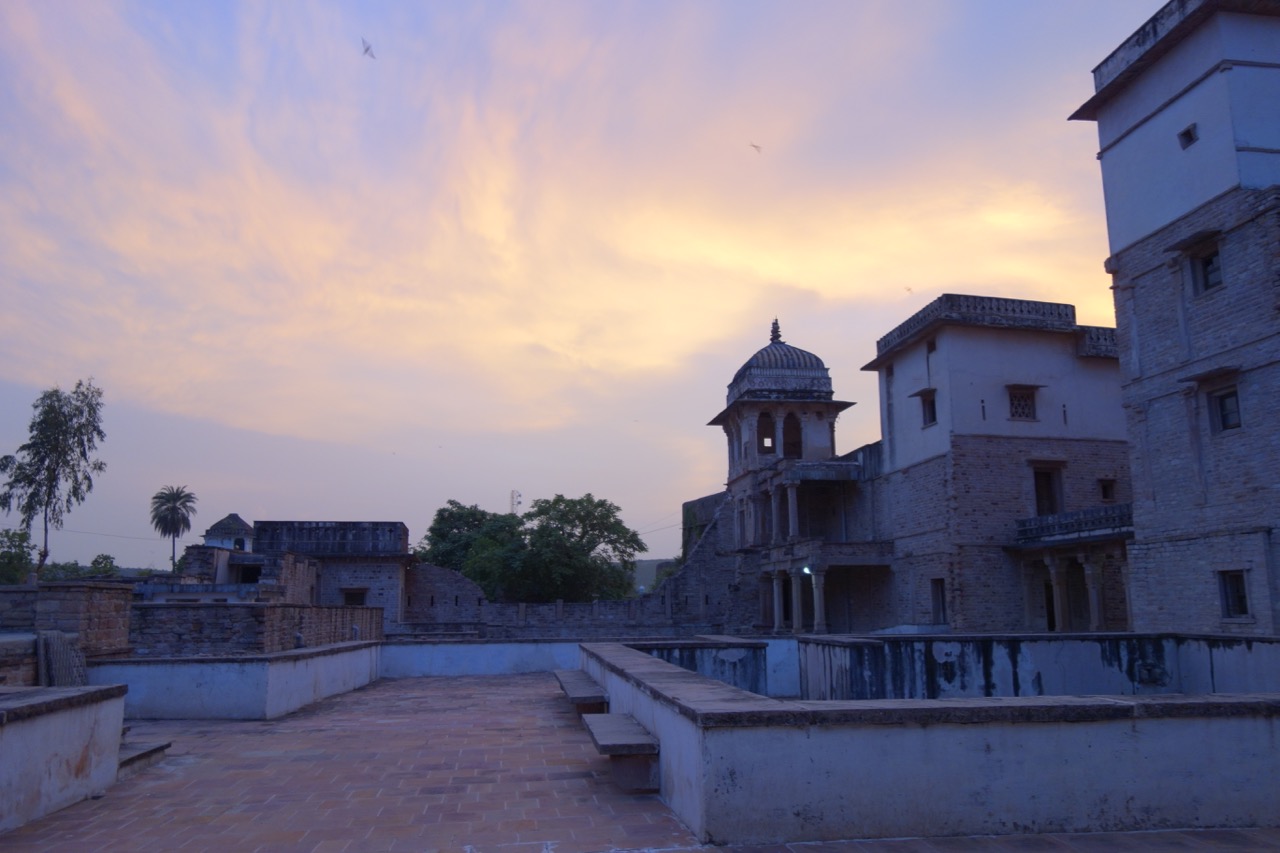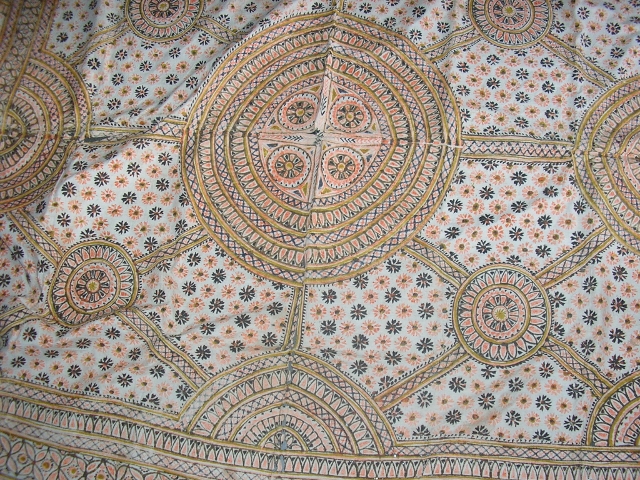I’m back in India again, and during the last two weeks I’ve been from Mumbai down to Bagalkot in Karnataka, back up to Mumbai then up to Kutch.
I was in Bagalkot to visit the weavers of the Ilkal sari, named after the town of Ilkal, an ancient weaving centre. The sari is characterised by its cotton warp, art silk border and art silk pallu in bright reds and greens with shimmering motifs including temples, hanige (comb), koti kammli (fort ramparts), toputenne (jowar) and rampa (mountain range) on the pallu. Alongside Somaiya Kala Vidya’s (SKV) pilot course last year, they ran an outreach project, which involved three weavers from Bhujodi travelling to Bagalkot, where they teamed up with five weavers on a collaborative project. Judy Frater, founder-director of SKV came up with this project after being invited to a Think tank on the development of the region amidst plans for the expansion of a large dam. The two groups of weavers took elements of each other’s traditional weaving and produced a collection of saris, dupattas and stoles for an exhibition in Mumbai where most weavers sold the majority of their collections. The Bagalkot weavers are now continuing to receive design tuition in their local area from SKV teachers.

I travelled with Nilanjan, programme coordinator at SKV who was going to check the progress of the collections for the second exhibition coming up in a couple of weeks. The weavers had come a long way in a year. They had learnt about colour and design placement, and so had created new compositions of the traditional temple motif seen in the Ilkal sari along with new motifs. They had also incorporated the kundi technique of joining the warp. This is the traditional method used in Ilkal sari weaving to attach the cotton body to the silk warp, and so weaving each sari on separate warps. The weavers also returned to using pure silk.

Alongside the Bhujodi to Bagalkot collections will be work by both suf embroidery artisans, and Chikan embroiderers from Lucknow. This was the second outreach project by SKV, using a similar approach to the Bhujodi to Bagalkot. Three suf embroiderers travelled to Lucknow to work with three Chikan artisans. Chikan was originally embroidery done for the royals using white thread on fine white muslin. In the last few decades, like so many skilled Indian crafts, chikan has been subjected to exploitative middlemen. So artisan collaboration, as well as design education (a school has recently started teaching design to chikan embroiderers in Lucknow) will work towards enabling artisans to work directly with their market, innovate and make the most of their skills. Look out for my review of the exhibition on here soon!
Meanwhile I’m in Adipur, South Kutch for the Somaiya Kala Vidya final class of the year long design course. This class is Presentation and Merchandising. The campus has been buzzing with creativity and enthusiasm, as well as a few nerves as the students prepare to present their work to a jury of professionals next week!
Read about my last journey studying the handloom weaving of Kutch here




